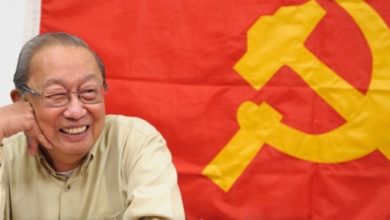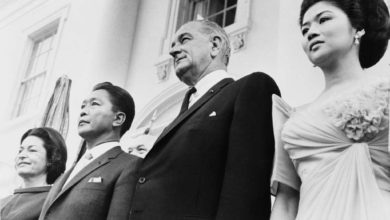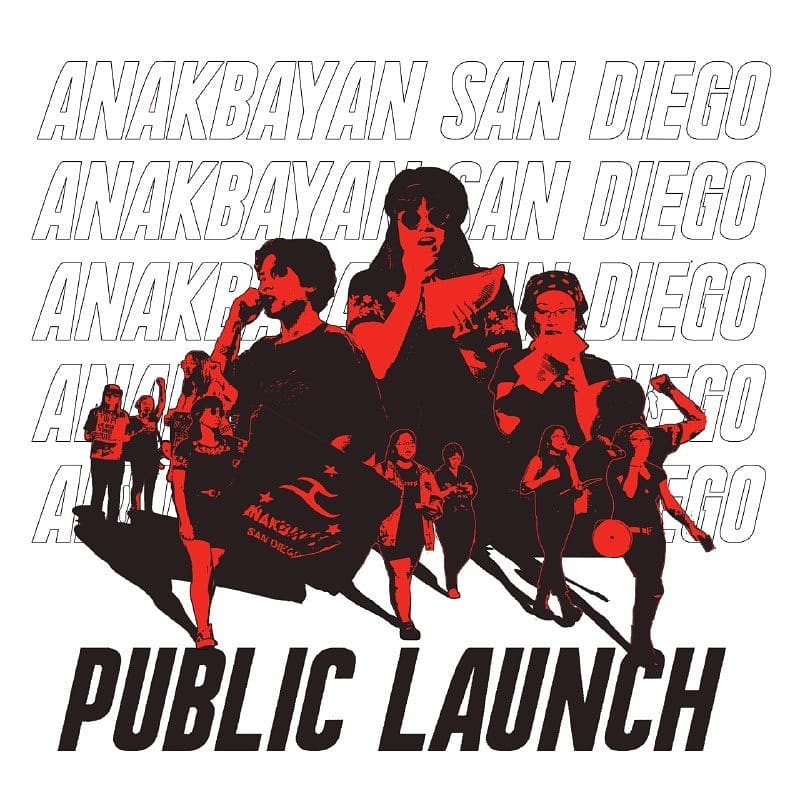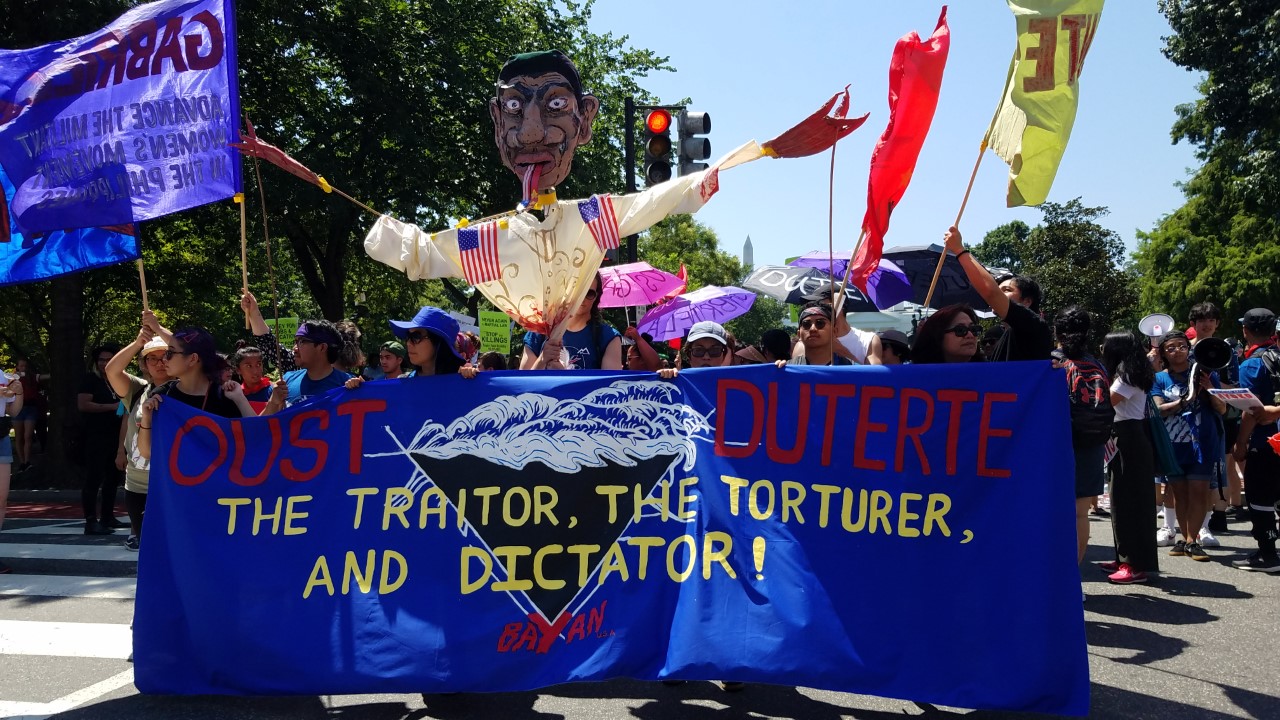Liberation News visited Caraga (a resource-rich region in northern Mindanao that has become a flashpoint of struggle) as part of the BAYAN-USA Peace Mission from July 1 to July 7 to report on the fight for liberation under intensifying state violence. Some names and details have been omitted to prevent retaliation against those involved.
The Philippines, and in particular its second-largest island—Mindanao, have been the site of intense struggle for centuries, due to the abundance of natural resources highly sought by colonial and capitalist powers and the heroic resistance of its inhabitants. The Philippines suffered 300 years of colonial rule under the Spanish empire, but Mindanao was never fully conquered due to the high level of organization and militant resistance of the indigenous Moro people. The Philippines was seized from Spain and became a colony of the United States in 1898, as a result of the Spanish-American War. In 1946 the U.S. ended formal colonial rule of the Philippines, but pioneered the tactic of neo-colonialism there, holding the reigns of power through a series of comprador dictators and financial “aid.”
Outright military rule was ended through mass struggle in 1986 with the overthrow of dictator Ferdinand Marcos, but neoliberalism has since reigned supreme and the country is now slipping back towards fascism. While brutal state repression never ended, today Mindanao has been under official martial law since May 2017 (after two extensions of this policy), imposed by the extreme right-wing president Rodrigo Duterte. Supposedly martial law in Mindanao is to protect civilians from a handful of militants who dubiously claim to be affiliated with ISIS and the Moro Islamic Liberation Front, the resistance movement of the still-oppressed Moro people that traces its lineage to anti-colonial rebellion against Spain, who are falsely portrayed as “terrorists.” Martial law was inaugurated by the carpet bombing of Marawi city, which displaced 98 percent of the city’s inhabitants—nearly 1.1 million civilians. Today the city still lays in ruin, and 100,000 remain homeless.
Since Duterte took office in 2016 and declared a “War on Drugs”, there have been nearly 30,000 extra-judicial killings in the Philippines, more than during the entire reign of Marcos. Jails are overcrowded with most prisoners held on trumped-up drug charges; 75 percent have yet to see a day in court.
In the midterm election last May, Duterte made large gains in the Congress and Senate, thanks to widespread documented voter intimidation and fraud. With this increased power many fear that Duterte may be able to change the constitution and extend his term as president. While the Communist Party of the Philippines has waged a revolutionary armed struggle for over 50 years with the New People’s Army, U.S. imperialism continues to prop up Duterte’s government.
The Philippines is the largest recipient of U.S. military aid in East and South-East Asia, and it provides an important staging ground for U.S. military domination in the region. U.S. military bases in the Philippines were handed over to the country in 1992—as a result of mass struggle—but the handover was in name only, and today there are still around 5,000 U.S. troops deployed there. In 2018 the U.S. provided $193.5 million in military aid to the Philippines. This figure does not include the $63 million in arms sales, or the 2,253 donated machine guns, 5 million rounds of ammunition and surveillance equipment of unreported worth. At least $145.6 million in military aid has already been pledged for 2019. When the Philippine Senate tried to restrict funding for Duterte’s Drug War, the U.S. government upped its funding to make up the difference. Donald Trump has praised the “war on drugs” and said it should be replicated in the U.S.
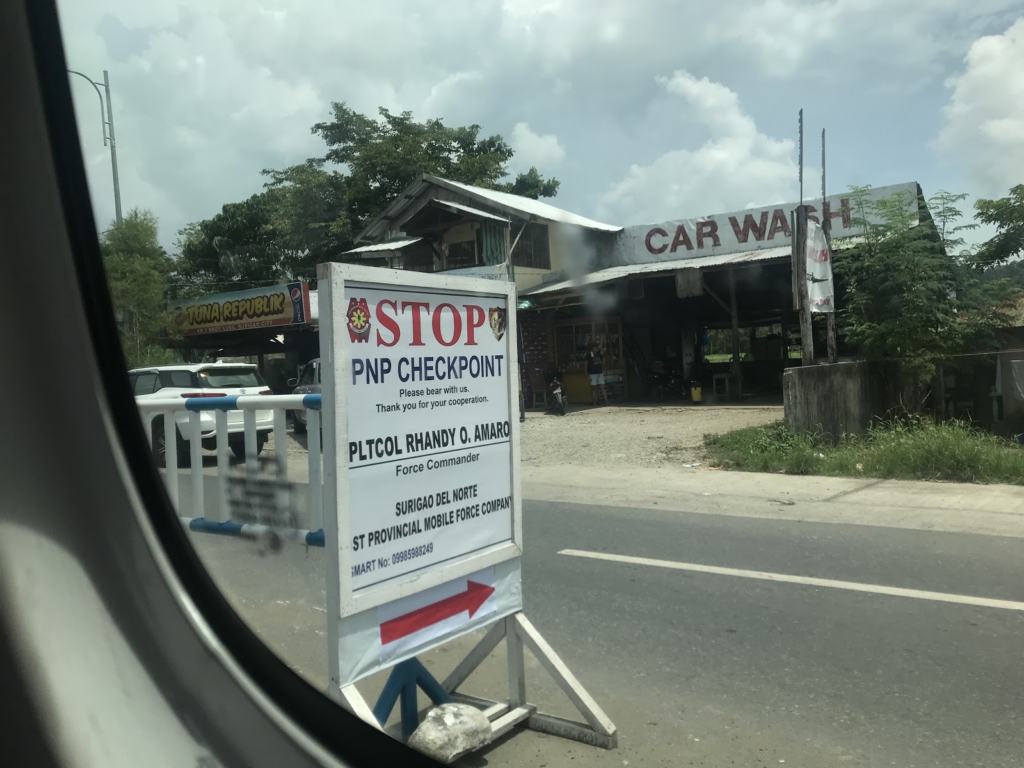
Militarization of Mindanao
Currently the Armed Forces of the Philippines has deployed more than 80% of its forces in Mindanao. The AFP is a notorious institution that remained intact after the overthrow of the Ferdinand Marcos regime. In Caraga, the AFP has deployed two infantry brigades, five battalions, and a Special Forces brigade. In addition, there are 90 paramilitary groups in Caraga, including one called the “Wild Dogs.” Paramilitaries wear the same uniform as the AFP, but without name-tags, and AFP forces are known to sometimes operate as paramilitaries by covering their name-tags. The Philippine National Police also employs thousands of officers in Caraga, swelling to 6,000 to “secure” the recent midterm election. There are over 4,000 military and police checkpoints in Mindanao, often accompanied by wanted posters for NPA “terrorists.” While state armed forces are supposedly deployed to protect civilians, their high concentration around corporate property as well as their actions reveal their true purpose: maintaining the flow of capital out of the island by any means. This means attempting to crush any movement seen as a threat to capital. Human rights lawyers, journalists, labor and peasant organizers, clergy, teachers, and leaders of indigenous peoples are prime targets.
Since 2017 in Caraga there have been 18 extrajudicial killings, 265 cases of falsified criminal charges, and countless instances of intimidation and harassment.
Liberation News interviewed several victims of falsified charges and harassment, who described the systematic way in which leaders are targeted.
Most harassment revolves around accusations that the victims are part of, or support, the NPA. Victims of harassment are often approached by soldiers who ask leading questions about the NPA, or are asked to become an informant for the military. Multiple victims described armed soldiers regularly appearing outside their homes after such encounters. One victim of falsified charges was charged with two crimes that supposedly took place minutes apart, despite their locations being hours apart by car.
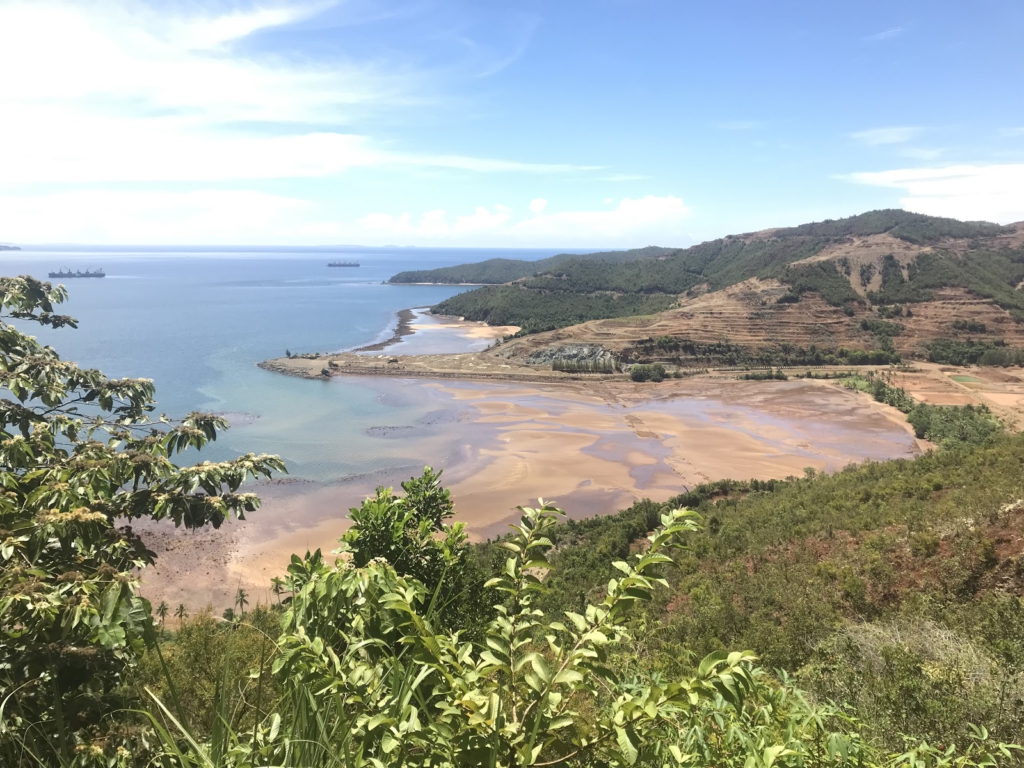
The indigenous Lumad peoples and their fight for self-determination
There are approximately 500,000 Lumad people of various tribes in Caraga. In addition to expanding banana and palm oil plantations used for export, almost 1/3 of land in Caraga is already covered by mining operations. The remaining land is one of the last ecological frontiers in the Philippines, with 12 Key Biodiversity Areas according to the Department of Environmental and Natural Resources of the Philippines.
The Manobo Lumad tribe has 4,000-5,000 residents in the Andap Valley Complex, a much-untapped area with the largest concentration of coal in the Philippines. 15 new mining contracts for the Andap Valley Complex have been granted by the government, but construction has yet to begin. Many Lumad have heroically refused to leave their ancestral lands there, and have organized themselves to resist attacks that seek to drive them out.
A primary method to retain the sovereignty and culture of the Lumad people in the face of violent repression is the Lumad schools, which educate the youth in ancestral farming techniques and more, and have achieved full literacy for the Lumad (in the 1980s, 95 percent of Lumad people were illiterate).
Soon after president Duterte declared martial law in Mindanao, he proclaimed: “Leave. I’m telling those in the Lumad schools now, get out. I’ll bomb you.”
This was no empty threat. Since then more than 3,000 Lumad people have suffered forced evacuation. Duterte also made his motives clear, saying “I will personally choose the [mining] investor here in the Andap Valley Complex”.
On June 4 Duterte made public the appointment of Allen Capuyan—retired colonel and paramilitary leader known for smuggling the illegal drug shabu—as chairperson of the National Commission on Indigenous Peoples.

Liberation News visited Lianga, a Lumad community in the Andap Valley Complex—which was the site of the most recent forced evacuation and numerous other attacks—to interview residents. On May 5, soldiers descended on “Kilometer 9” in Lianga, where homes and Lianga’s Lumad elementary school is located. The soldiers informed residents that they would be staying in the community to carry out a “project.” When asked what the project was, they refused to answer. Eventually they claimed to be conducting a “family census,” and ordered the village’s men to help carry military supplies into the area so they could set up camp.
At first the residents refused to cooperate, but had to give in to intimidation and threats of arrest on fake charges. The real purpose of the occupation was to sow fear. The soldiers cut all the branches off of a tree that the villagers would have used for lumber, and placed an empty bullet casing on each cut branch. A helicopter was used to drop bombs within 50 meters of the school. Fearing escalation, villagers evacuated Kilometer 9 and took refuge in a nearby town, remaining there for a week until the soldiers left the area. This incident was not an anomaly, but a common practice for forced evacuations. In the past Lumad people would evacuate to a cave or forest enclave, but now evacuate to towns as a form of resistance, to make their evacuation visible and put pressure on local authorities.
In January, two brothers were shot while harvesting crops. Liberation News spoke with relatives of the victims about the incident. The gunshots that killed the brothers were heard by villagers, but they were unable to locate the victims. Three days later the AFP dumped the bodies, naked and tied at the hands and feet, into the canal of the nearby town—after planting weapons on and taking video of them to support accusations that they were part of the NPA. By then the bodies had already started to decompose, and the family asked the police to transport the bodies in a police car. Instead they loaded them onto a dump truck. The family’s attempt to file a formal complaint was ignored. The AFP offered to pay the family off, but they have refused to take money, because they want justice instead.
These recent acts of terror in Lianga invoked painful memories of the Lianga Massacre, which took place in and around Lianga’s Lumad high school. Liberation News spoke with a Lumad council leader who witnessed the event. On September 1, 2015, AFP forces and paramilitaries started knocking on the doors of homes at 4 am, and forced the entire village to gather for an “assembly” at gunpoint. One soldier said, “Why did you have to be so hard-headed? You opposed the mining, now we are going to destroy your schools.” They then forced the villagers to watch as they executed three leaders of the village. Two were killed in front of the residential area. Dional Campos, a Lumad leader, was shot to death. Vallo Sinzo, another Lumad leader, was beaten with wooden planks before being shot to death. Emerito Samarta, a priest and the director of the Lumad school (known as “Tatay (Father) Emok”), had his throat slit by the soldiers who found him sleeping in the school. After the massacre, the soldiers set up camp across from the high school and used the building for target practice.
Liberation News asked Lumad villagers in Lianga about the effect of this state terrorism on children. We were told, “There is extreme fear among the children. Some start screaming in the middle of the night. Some refuse to go to school.” We were also told that two infants have died from extreme stress as a result of bombings and violence (these deaths are not included in the direct extrajudicial killings statistics).
Liberation News was fortunate to have even gained access to Lianga, as AFP checkpoints often block entry for activists, aid workers, and even the transport of food into Lianga (Lianga grows its own vegetables and livestock, but still needs to import rice).
Yet the Lumad continue to resist. In addition to refusing to leave their land and the Lumad schools, Lumad organize protests, petition local government authorities, file legal cases (when funds allow), work toward strengthening a self/sufficient economy, and work with church leaders and international solidarity activists to spread awareness about their struggle. Here are just a few statements from villagers we spoke with in Lianga:
“I’m not going to Manila to hide, I’m going to die here.”
“When they kill one leader, they create a thousand more.”
“This is the Lumad experience. The mining will continue, but the Lumad will continue to fight against it. We will stay united, we will continue to defend our land, organize, and educate the people against foreign capitalist investors.”
“We really believe that the people united will never be defeated.”

Unity in struggle
MAPASU, the Lumad civilian organization, maintains a high level of unity and organization among the Lumad to resist attacks. Lumad leaders from different villages meet to coordinate evacuations and resistance as one. This remains a critical weapon in the face of age-old divide-and-rule tactics imposed against them. State forces attempt to harass and bribe Lumad people to join them and act as paramilitaries. Most refuse, but there are exceptions. A Lumad man named Marcos Bocales accepted the military’s offer, and convinced his two brothers and nephew to join him, forming a Lumad paramilitary detachment called the Marcos Bocales Group. The Marcos Bocales Group, along with the AFP, were responsible for the Lianga Massacre. Currently another Lumad paramilitary detachment is taking part in a propaganda tour in the U.S. We asked villagers for their response to this action. They expressed disgust at the betrayal by the Lumad paramilitaries, and pointed out that the Lumad have legitimate representatives who actually speak on their behalf.
The Lumad paramilitaries will be in Washington, D.C. on July 22, where there will also be a protest against state violence in the Philippines during Duterte’s State-of-the-Union speech led by BAYAN-USA and others. The call is to gather at 11 AM at Lafayette park in front of the White House, before marching to the Philippine embassy.
Villagers in Lianga spoke about the importance of international solidarity for their struggle:
“Brothers and sisters from another country, we are grateful you are here to help us in our struggle, and you are in the U.S., which is the most oppressive country to us. We are happy you are there to fight.”
“I challenge you in the U.S. to resist against Trump.”
Liberation News was also honored to speak with Eufemia Cullamat, the first Lumad congresswoman, elected in May despite widespread voter suppression. Eufemia was raised in Lianga, and made the decision to enter politics after witnessing the Lianga massacre. She said, “We are all brothers and sisters, despite being of different nationalities. It’s really great for all people to join the movement, because we are suffering around the world. Taxes from the people should be used for the people. Whatever attacks they throw at us, we will continue to struggle.”


